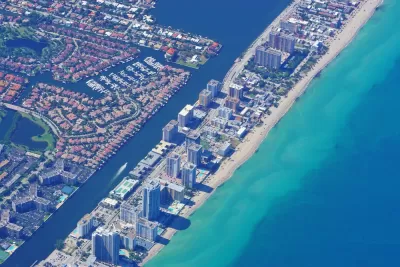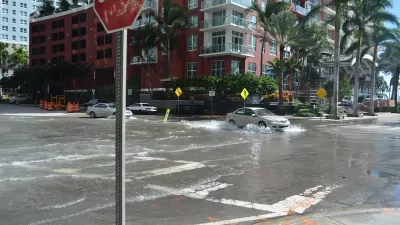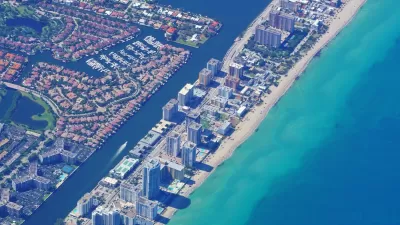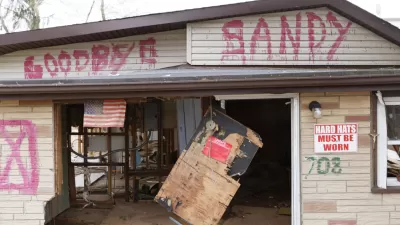A climate change conference in Southeast Florida this week delivers bad news for communities on the coast in South Florida and in the Florida Keys. Some of those communities won't be saved as the receipts for climate change come in.

"The sea rise curves unveiled Wednesday at the Southeast Florida Climate Leadership Summit in Key West tack on about three to five extra inches by 2060, and that number only gets bigger in the future," reports Alex Harris for the Miami Herald.
"The region went from expecting between 14 and 26 inches of sea level rise by 2060 — commonly shortened to two feet by 2060 by local leaders — to predicting 17 to 31 inches of sea rise," according to Harris.
While Harris characterizes that news as not "catastrophically different than previous years," the focus of this article is on South Florida.
In an article by Christopher Flavelle and Patricia Mazzei for the New York Times, the news for communities in the Florida Keys is less diplomatic. Sea level rise is an existential threat, according to a report focusing on Sugarloaf Key, a small island 15 miles up Highway 1 from Key West, and released at the same event this week.
To keep those three miles of road dry year-round in 2025 would require raising it by 1.3 feet, at a cost of $75 million, or $25 million per mile. Keeping the road dry in 2045 would mean elevating it 2.2 feet, at a cost of $128 million. To protect against expected flooding levels in 2060, the cost would jump to $181 million.
And all that to protect about two dozen homes.
The larger, ethical questions raised by the report are debated in the article, and it's clear that decisions about who's property, and where, gets saved, will need to be made sooner than anyone anticipated.
FULL STORY: New projections show that South Florida is in for even more sea level rise

Alabama: Trump Terminates Settlements for Black Communities Harmed By Raw Sewage
Trump deemed the landmark civil rights agreement “illegal DEI and environmental justice policy.”

Study: Maui’s Plan to Convert Vacation Rentals to Long-Term Housing Could Cause Nearly $1 Billion Economic Loss
The plan would reduce visitor accommodation by 25% resulting in 1,900 jobs lost.

Planetizen Federal Action Tracker
A weekly monitor of how Trump’s orders and actions are impacting planners and planning in America.

Waymo Gets Permission to Map SF’s Market Street
If allowed to operate on the traffic-restricted street, Waymo’s autonomous taxis would have a leg up over ride-hailing competitors — and counter the city’s efforts to grow bike and pedestrian on the thoroughfare.

Parklet Symposium Highlights the Success of Shared Spaces
Parklets got a boost during the Covid-19 pandemic, when the concept was translated to outdoor dining programs that offered restaurants a lifeline during the shutdown.

Federal Homelessness Agency Places Entire Staff on Leave
The U.S. Interagency Council on Homelessness is the only federal agency dedicated to preventing and ending homelessness.
Urban Design for Planners 1: Software Tools
This six-course series explores essential urban design concepts using open source software and equips planners with the tools they need to participate fully in the urban design process.
Planning for Universal Design
Learn the tools for implementing Universal Design in planning regulations.
Caltrans
Smith Gee Studio
Institute for Housing and Urban Development Studies (IHS)
City of Grandview
Harvard GSD Executive Education
Toledo-Lucas County Plan Commissions
Salt Lake City
NYU Wagner Graduate School of Public Service





























